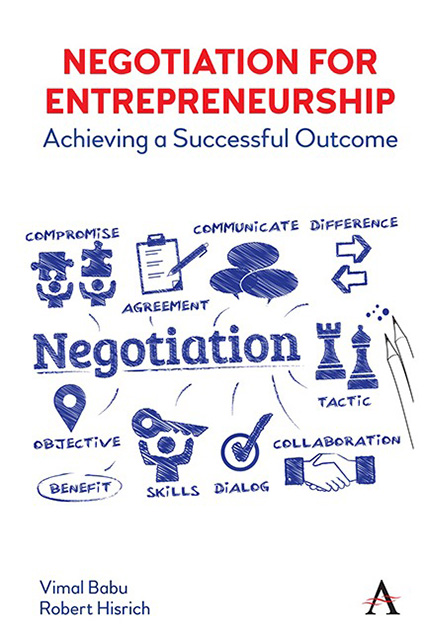Book contents
- Frontmatter
- Contents
- Acknowledgements
- Dedication
- About the Authors
- Foreword
- Preface
- Introduction
- Part I Entrepreneurship in The Twenty-First Century: Managing in A Vuca World
- Part II Entrepreneurship: Minimize Mistakes To Maximize Gains
- Part III Strategy, Planning and Tactics in Negotiation
- Part IV Negotiation and Women Entrepreneurs
- Part V Cultural Dynamics and Negotiation
- Index
Chapter 7 - Ten Laws of Negotiation for Entrepreneurs
Published online by Cambridge University Press: 17 October 2023
- Frontmatter
- Contents
- Acknowledgements
- Dedication
- About the Authors
- Foreword
- Preface
- Introduction
- Part I Entrepreneurship in The Twenty-First Century: Managing in A Vuca World
- Part II Entrepreneurship: Minimize Mistakes To Maximize Gains
- Part III Strategy, Planning and Tactics in Negotiation
- Part IV Negotiation and Women Entrepreneurs
- Part V Cultural Dynamics and Negotiation
- Index
Summary
Learning Objectives
1. To understand the importance of distinction between a meeting and a negotiation meeting
2. What are disastrous outcomes and how to manage them
3. To understand the art of probing in negotiation
4. Evaluate the importance of timing in making offers
5. Overview concepts of empathy, trust and irrationality. Study their importance in the context of negotiation
Opening Profile: Starbucks and Kraft Foods
Back in 2013, a three-year negotiation and dispute between Starbucks and Kraft Foods over the distribution of Starbucks packaged coffee in grocery stores was finally resolved. On November 12, 2013, an arbitrator determined that Starbucks had breached its agreement with Kraft and ordered the coffeemaker to pay the food giant $ 2.75 billion.
After negotiating an agreement in 1998, Kraft began selling Starbucks packaged coffee through grocery stores. In 2010, with sales of its packaged coffee reaching about $ 500 million annually, Starbucks offered to buy Kraft out of the contract for $ 750 million. Starbucks wanted greater flexibility to sell the single-serve coffee pods that were hot at the time. The company’s agreement with Kraft limited Starbucks to selling pods that worked only in Kraft’s Tassimo machines.
Kraft objected to the deal termination, but Starbucks broke off the business relationship, nonetheless. Since then, Starbucks’ share of single-serve pod market and grocery-store products has grown significantly. The parties’ dispute over Starbucks’ termination of their partnership moved to arbitration when the two sides were unable to settle it on their own.
The business dispute illustrates how the fluid nature of marketplace trends can cause negotiated business agreements to become undesirable over time. In their original agreement, Kraft and Starbucks would have been wise to agree upon set times for renegotiation, during which they would have had leeway to revisit existing deal terms in the face of changed economic and industry conditions. They could also have negotiated conditions for ending the agreement early, such as cancellation penalties and other forms of compensation.
Sometimes you and your counterpart can draft the agreement on your own. Larger agreements and dispute settlements, on the other hand, typically have legal provisions drafted by a lawyer or a third party.
- Type
- Chapter
- Information
- Negotiation for EntrepreneurshipAchieving a Successful Outcome, pp. 115 - 128Publisher: Anthem PressPrint publication year: 2023

